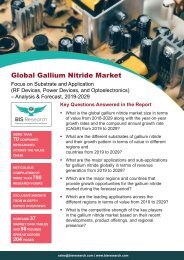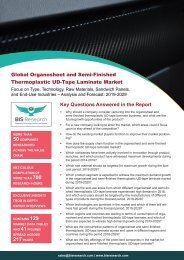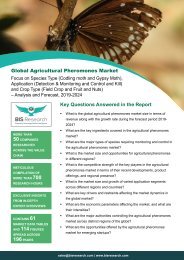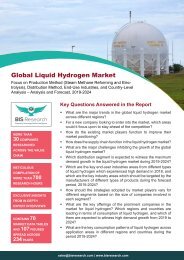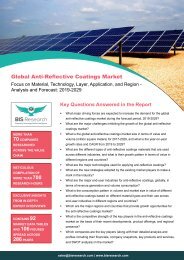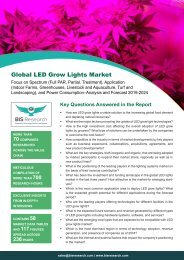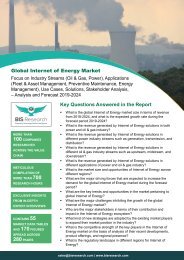Silicon Photonics Devices Market Size, 2018-2024
The global silicon photonics industry, telecommunication application segment dominated the global market for silicon photonics devices in 2017 with a total revenue of $XX million, which is expected to grow at a CAGR of XX% during the forecast period. However, the data communication application is expected to grow at the highest CAGR of XX% during the forecast period. This can be attributed to the rising demand of high speed data transfer, continuous decline in the price of silicon photonics technology, and investments made by government organizations and institutions.
The global silicon photonics industry, telecommunication application segment dominated the global market for silicon photonics devices in 2017 with a total revenue of $XX million, which is expected to grow at a CAGR of XX% during the forecast period. However, the data communication application is expected to grow at the highest CAGR of XX% during the forecast period. This can be attributed to the rising demand of high speed data transfer, continuous decline in the price of silicon photonics technology, and investments made by government organizations and institutions.
Create successful ePaper yourself
Turn your PDF publications into a flip-book with our unique Google optimized e-Paper software.
1 Research Scope & BIS Methodology<br />
1.1 Scope of the Report<br />
The report constitutes an extensive study of the global market for silicon photonics devices. It includes<br />
a thorough analysis of different types of products as well as different components used in the silicon<br />
photonics technology. The market has further been segmented in terms of application, which helps in<br />
understanding the behavior of different verticals in using silicon photonics technology. It further explains<br />
the driving factors, challenges, and growth opportunities of the global market for silicon photonics devices.<br />
Major players have been identified on the basis of revenue generation pertaining to silicon photonics<br />
devices market, regional presence and developments related to the silicon photonics technology. A detailed<br />
section of company profiling has been incorporated in order to understand the players’ strategic behavior.<br />
The silicon photonics devices market is further explained and analyzed on the basis of region which has<br />
been categorized into four regions namely: North America, Europe, Asia-Pacific, and Middle-East & Africa<br />
and Latin America. Moreover, the country analysis has also been done in order to provide a clear picture<br />
of the silicon photonics devices market. The growth rate of various countries can be calculated based on<br />
the frequency of adopting silicon photonics technology by a country, ongoing developments in the regions<br />
by the government as well as the private entities.<br />
1.2 Research Methodology<br />
The research methodology adopted for this specific study includes a mix of data collected from primary<br />
and secondary sources. Both primary sources (in-house experts, industry leaders, and market players)<br />
and secondary sources (a host of paid, and unpaid databases) along with analytical tools are employed<br />
to build the forecast and predictive models.<br />
Primary Data Sources<br />
The primary sources involve the industry experts from the silicon photonics devices market including<br />
the suppliers, device manufacturers, and distributors, among others. Industry Experts such as CEOs,<br />
vice presidents, marketing directors, and technology & innovation directors, among others, have been<br />
interviewed to obtain and verify both the qualitative and quantitative aspects of the research study. The<br />
key data points taken from the primary sources include:<br />
The Key Data Points Taken From Primary Sources Include:<br />
• Validation and triangulation of all the numbers and graphs<br />
• Validation of report’s segmentation and key qualitative findings<br />
• Understanding the competitive landscape<br />
• Current and proposed production values of a particular product by the market players<br />
• Validation of the numbers of various markets for market type<br />
• Percentage split of individual markets for geographical analysis<br />
Secondary Data Sources<br />
The research study involves the extensive usage of the secondary sources such as databases, company<br />
websites, and annual reports.<br />
sales@bisresearch.com www.bisresearch.com 6








